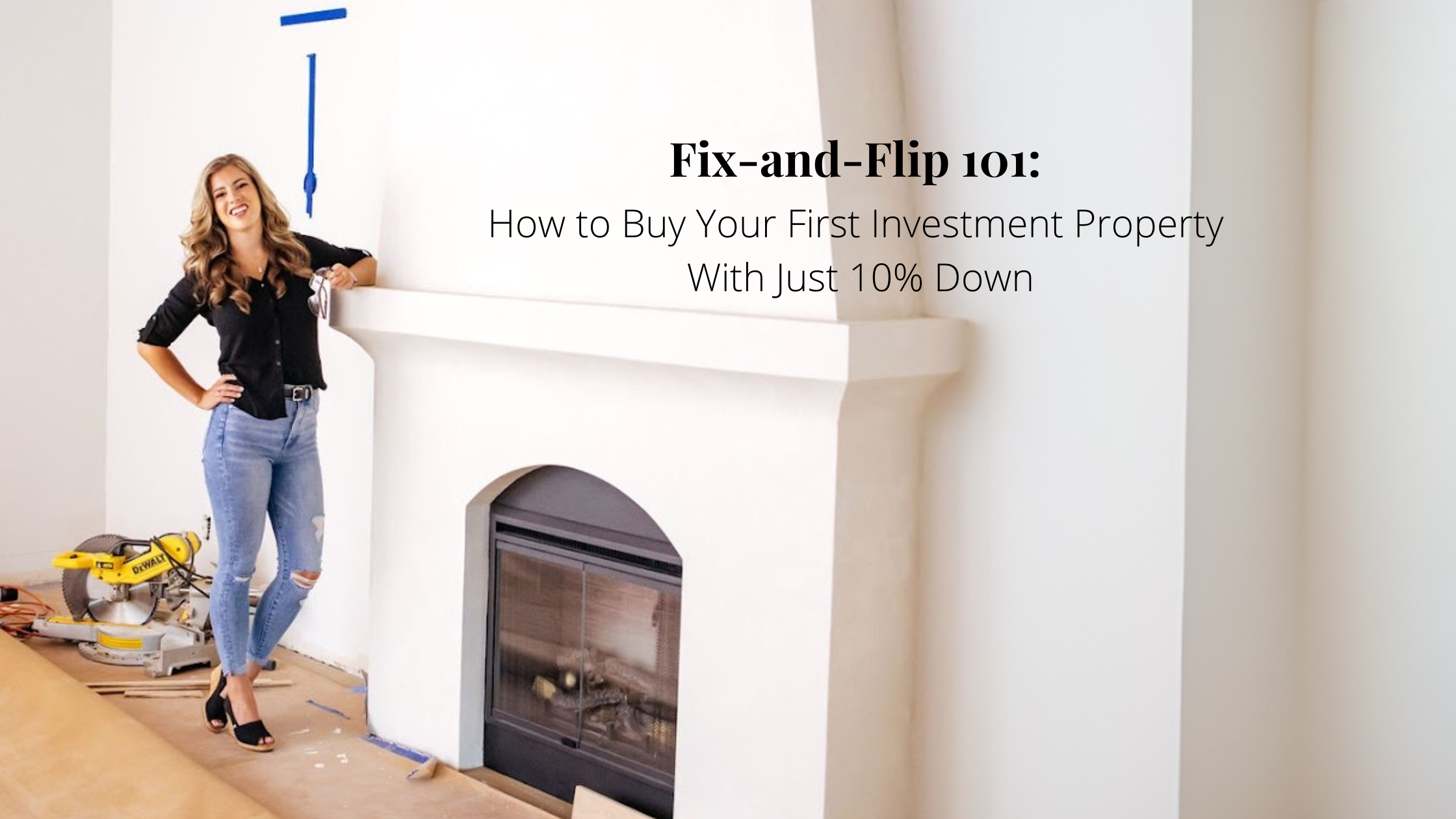You don’t need six figures in cash to become a real estate investor and start your first fix-and-flip!!
With the right strategy… and the right financing… You can buy your first fix-and-flip property with as little as 10% down, including full renovation financing. Yes, really.
Let’s break down how it works, why smart investors make their money when they buy and wait to cash the check when they sell, and what first-timers often miss when calculating real ROI.
Why Fix-and-Flip Still Works in 2025
Even in a higher rate environment, flipping properties remains a strong wealth-building tool, if you approach it with strategy, not emotion.
With programs now available nationwide, you can:
✅ Purchase with 10% down
✅ Finance 100% of renovation costs
✅ Qualify on investment properties (LLC-owned)
✅ Access fast closings and 12 month interest only terms
This opens the door for both first-time flippers and experienced investors looking to scale.
You Make Money When You Buy
It’s not the sale that makes you profitable, it’s the purchase.
The best flips start with finding a property below market value that has potential through updates, clean-up, or repairs. Your job is to buy right, control renovation costs, and bring the home to its highest resale potential.
How to Calculate ROI (The Smart Way)
Here’s a simplified version of how to calculate ROI:
(After Repair Value – Total Costs) ÷ Cash Invested = ROI
But when you’re using fix-and-flip financing, there’s an important limit to keep in mind:
👉 The total loan (90% of the purchase + 100% of the renovation) can’t exceed 75% of the ARV.
Let’s look at an example that works within that structure:
- After Repair Value (ARV): $300,000
- 75% of ARV = $225,000 → this is the maximum total loan amount
- Renovation budget: $50,000 (fully financed)
- That leaves $175,000 available for the purchase loan
- So, your max purchase price = $194,444 (since 90% of that is $175,000)
Now, let’s say:
- Purchase price: $194,000
- Loan covers 90% = $175,000
- You bring $19,000 down
- Plus closing and holding costs (say ~$21,000 total)
Total cash invested = $40,000
If you sell for $300,000, pay off your $225,000 loan and ~$25,000 in selling costs, your net profit is $50,000.
$50,000 ÷ $40,000 = 125% ROI
And that’s the power of buying smart and using leverage well. You don’t need perfect numbers to run scenarios, just a good estimate and a plan to stay under budget.
Know All Your Costs
Too many new investors only focus on the renovation budget. But flipping a house comes with multiple categories of costs, and skipping one can kill your profit.
Let’s break it down:
🧾 Purchase Costs
- Down payment (typically 10-20%)
- Loan Points and Costs (3-5% of Loan amount, inclused points, appraisals, underwritting/attorney fees)
- Closing costs
- Title insurance and doc stamps
- Wholesale assignment fees (if buying off-market)
- Realtor commissions (if buying on-market)
- Occasionally paying the seller’s side of closing costs
🔑 Pro Tip: Ask your closing agent if you qualify for a reissue credit on title insurance when you sell, it was just issued when you purchased, and it could save you hundreds.
🏡 Holding Costs (While You Renovate)
- Property taxes
- Property insurance
- Loan interest
- Utilities (electric, water, gas)
- Lawn maintenance or security
- HOA or COA dues (if applicable)
- Permits, temporary storage
These are the “soft costs” that can add up quickly if your flip runs behind schedule.
📦 Selling Costs
(Many of these also apply on the purchase side if you’re covering both!)
- Realtor commissions
- Closing/title company fees
- Doc stamps and transfer taxes
- Potential buyer concessions or last-minute repairs
- Marketing/staging/photos (if listing traditionally)
💸 Tax Costs
Yes—flipping income is typically taxed as ordinary income, not long term capital gains. That means you’ll owe tax on your profits when you file. It’s smart to set aside a portion of your profit for that tax bill so it doesn’t sneak up on you in April.
Who’s This Fix-and-Flip Strategy Right For?
This low-down, high-impact fix-and-flip model works well for:
- First-time investors ready to break into the market
- Experienced buyers ready to scale
- Everyday folks looking to using profits and/or flips to roll into a rentals and passive income
And since these programs are available nationwide, your location won’t hold you back.
Ready to Start Flipping?
You don’t have to be a contractor or cash buyer to flip your first property. You just need the right numbers, the right plan, and the right financing.
If you’re ready to see what’s possible, I’ll walk you through your numbers, help you compare your funding options, and make sure your first deal sets you up for success—not stress.
📩 Click here to get started or reach out for a personalized investment plan.

leave a comment
share
share
share
share
share